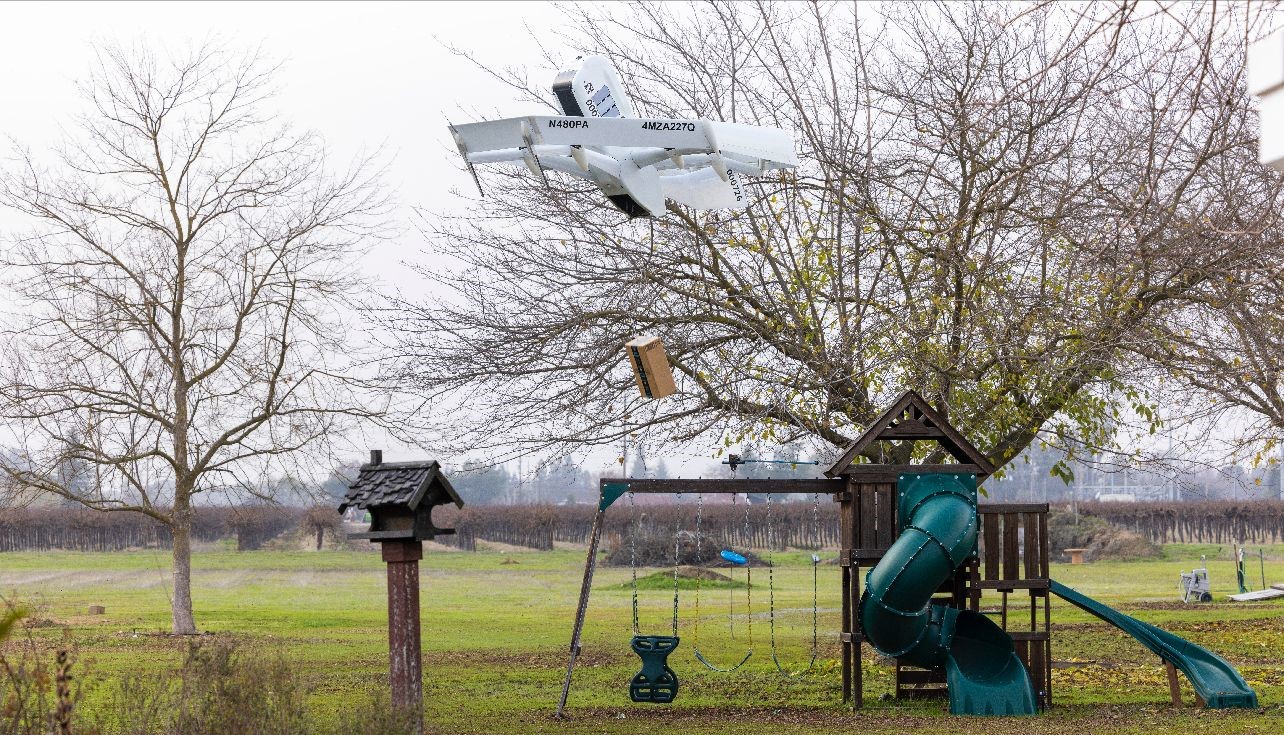
Despite recurring announcements with significant fanfare at various stages of the service’s very long awaited rollout, it appears Amazon drones aren’t actually delivering much – or often – in the two communities where they were finally put into operation last December.
A pair of media reports say the Amazon delivery drone program – first initiated in 2013 and ultimately launched in late December – has flown less than ten missions to customers in just over a month. Articles by The Information and Business Insider say company UAVs came out the aerial gate limping due to a number of handicaps, including Federal Aviation Administration (FAA) flight rules that have left operators hamstrung.
Read: Amazon wraps up 2022 with drone deliveries in California and Texas
The result, according to The Information, is Amazon drones have made as few as five deliveries in the company’s College Station, TX location, and perhaps two in Lockeford, CA.
For readers ever on the lookout for opportunities to rip the dominating (and domineering) online retail giant and its not always loveable CEO (and drone visionary) Jeff Bezos, now might be the time to let the Amazon schadenfreude freely flow.
Yet details in both articles suggest Amazon may deserve as much sympathy as sneers for the initial floundering of its ever so long-in-coming drone delivery service.
For starters, the company is now suffering from the same heavy layoffs rocking the broader tech sector – reductions that have reportedly further sapped the Amazon Prime drone delivery unit that experienced considerable cuts in the past.
Perhaps just as bad, while Amazon received its FAA Part 135 air carrier certificate to operate drone deliveries way back in 2020, the regulator has slapped the company with a range of restricting flight rules that may as well be anvils.
One prevents company UAVs from flying over people, and requires a visual observer to verify the absence of cars before crossing roads – a stipulation that turns the notion of beyond visual line of sight operation into an elevated oxymoron.
Other conditions limit the size of Amazon boxes the drones can haul – which in turn restricts the variety of goods potentially carried – and what kind of residences deliveries can be made to. The Verge compiled a partial list of the restrictions to offer an idea of just how hogtied the company has been left.
i. Operations over people are prohibited, unless otherwise approved by the Administrator;
ii. Overflight of power plants is prohibited;
iii. Overflight of schools during times of operation (e.g., elementary, middle, high, preschool and daycare facilities) is prohibited;
iv. Operations over or within 250 ft. laterally of moving vehicles are prohibited, unless otherwise approved by the Administrator
v. Overflight of any area deemed high risk by the Operator during the flight route design process are prohibited;
vi. Sustained flight within 250 ft. laterally of roadways is prohibited, and transitions over roadways is prohibited, unless otherwise approved by the Administrator;
vii. The UA must remain at least 100 ft. laterally from any person during all phases of flight, unless otherwise approved by the Administrator.
In response to the reports, Amazon says it continues working with the FAA to expand its range of operation and soften the multi-rule chokehold the regulator has slapped on its delivery drones. The company has also denied additional contentions the ongoing layoffs have particularly decimated its teams overseeing air service safety team, and ergo undermined the security of its service.
Read: Amazon reveals new delivery drone for longer, safer, quieter flights
Despite that brave corporate face, however, after nearly a decade of delays, crashes, fires, allegations of accident investigation obfuscations, and media reports its shambolic UK drone delivery outfit was “collapsing inwards,” Amazon has to be looking at the initial travails its belatedly launched service has faced and feel like someone up there really doesn’t want to share the skies with Air Bezos.
FTC: We use income earning auto affiliate links. More.




Comments